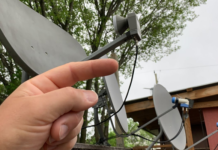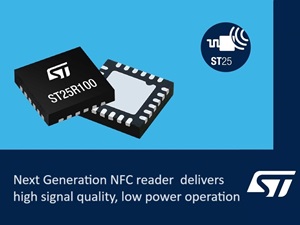
A current converter, sometimes referred to as a frequency inverter or just inverter (depending on its type and function) is an extremely useful device. Understanding its principle of operation will help us appreciate its role in our daily lives and see how innovations in this field are shaping our future. See below for five brief sections in which we present the topic of voltage adjustment and conversion in order to support you in choosing the best current converter for your needs.
FIRSTLY, WHAT IS A CURRENT CONVERTER?
A current (voltage) converter is a device that converts energy of one type into energy of another type. It is used to adjust voltage or convert direct current into alternating current, and vice versa.
This definition is quite general, but it pinpoints the main task for which a typical converter is designed. Still, it does not cover all that Qoltec devices have to offer and all benefits presented by the latest electronic engineering solutions employed by this manufacturer. We will describe them below, on the example of the Monolith series of converters, which offer the power rating from 300 W to 3 kW and one or two output ports.
SECONDLY, WHAT CONVERTER TYPES ARE AVAILABLE?
Converters are classified depending on the voltage change direction:
- DC-DC converters – used to convert voltage or direct current into other direct values. For example, they can be used to adjust voltage in electronic systems.
- DC-AC converters – (also referred to as inverters) are used to convert direct current into alternating current of a specified frequency and amplitude. Thanks to that, a sinusoidal alternating current waveform can be simulated. They are used in power supply modules for mains-powered electronic devices or in energy-efficient PV systems.
- AC-AC converters – change some alternating current characteristics such as its amplitude, frequency or phase. They are used in electric motors as speed regulators.
- AC-DC converters – use rectifying diodes and filtering systems to transform the sinusoidal alternating current waveform into a flat, direct current signal. This solution is applied in online UPS modules designed to ensure the highest possible quality of output voltage without any noise.
THIRDLY, A DC-AC CONVERTER AS A PORTABLE DEVICE (TYPES, CAPABILITIES AND INNOVATIONS)
A DC-AC voltage (current) converter is a mobile device that is a perfect solution whenever you have no direct access to the mains or a power outage occurs. It converts the direct current supplied by a battery or a cigarette lighter socket in your car into alternating current, which is necessary to operate various home and office appliances, power tools and all those gadgets that are useful when you travel.
Note also that this converter design is further divided into two types: devices generating modified sine waves and pure sine waves. What does it mean in practice?
- Modified (approximated) sine wave – its waveform is represented by small “steps” imitating a sine wave, because voltage conversion is a multi-stage process.
- Pure sine wave – a stable and smooth alternating current wave corresponding to the current supplied via a mains socket. It can be used to supply virtually any device, provided that the converter power is matched to its needs. Modified sine wave converters are relatively inexpensive, thanks to their simple design and the resulting reduced component and manufacturing costs. On the other hand, pure sine wave converters are based on cutting-edge technologies, and they need to be fitted with certain additional components in order to ensure the smoothest possible power conversion. Of course, such design differences affect the useful life of a unit and its possible applications.
The ever-growing Qoltec product assortment includes several models differing in terms of type, power rating and additional functions. A voltage converter with a battery charging feature, UPS function, and generating a pure sine wave is a good example of such an innovative design. In fact, it is a fully efficient 3-in-1 solution, which operates as:
- 12 V to 230 V voltage converter – after a battery is connected, the converter consumes energy necessary to supply a connected device;
- AGM, gel and Deep Cycle battery charger – after connecting it to the mains, it automatically switches to the battery charging mode;
- UPS module – when a mains power outage is detected, the device enters the emergency power mode, using the energy stored in the battery until the mains voltage is restored.
FOURTHLY, WHERE AND FOR WHAT CAN YOU USE A VOLTAGE CONVERTER?
When it comes to listing possible converter applications, let us first think about the places in which it may prove very useful. First of all, these will be locations without or with hindered access to mains power, e.g.:
- an outdoor camping trip;
- a trip in a campervan or caravan;
- a boar or yacht cruise;
- a weekend at a garden allotment;
- ambulance or fire brigade emergency operations.
Which equipment requires power supply in such circumstances? It depends on your needs and imagination, and the list of various devices that require power supply is getting longer, as the technology advances and the project budgets increase. The most popular examples include:
- laptops;
- smartphones;
- LED illumination;
- mini-fridges;
- electric kettles;
- microwave ovens;
- coffee makers;
- musical equipment;
- hair dryers;
- power tools, e.g. drills;
- medical equipment, etc.
Thanks to the UPS function of Qoltec converters, the latter can be used as emergency power supply units to support the operation of a central-heating heater or supply various appliances during temporary mains outages, etc. They also come with USB slots which you can use to charge your phone without a charger, with a charging cable alone.
Note, however, that a modified sine wave converter is suitable only for some types of equipment. It will be a perfect choice for less sensitive devices such as kettles, coffee machines, and even smartphones and laptops, but may pose problems when it comes to starting up appliances with induction motors, such as fridges, drills and compressors.
LAST BUT NOT LEAST, WHAT FACTORS SHOULD YOU TAKE INTO ACCOUNT WHEN CHOOSING A CONVERTER?
When individual devices to be powered by a converter have been selected and their needs defined, it is easier to find a converter that will ensure reliable power supply even in unfavourable circumstances.
When making comparisons, it is good to analyse the parameters of converters, five of which are of key importance. They are equally significant, and each of them might influence future efficiency.
- Power is a key parameter that is usually highlighted in the device name (i.e. “power converter”), and it is specified on the basis of two modes of operation, but sometimes only a single value is provided. The two modes are continuous operation and instantaneous power consumption. Instantaneous power is always higher than rated power, so make sure to look at the lower value in order to select the best converter for your needs.
- Efficiency – power losses are always a crucial issue related to operating a converter. Make sure to check the efficiency rating of the selected model. Values close to or equal to 90% are most desirable.
- Safety – selecting a converter that meets all electric safety requirements is very important. Qoltec converters come with the following integrated protection measures:
- UVP – protection against low output voltage;
- SCP – short-circuit protection;
- OVP – protection against excessive output voltage and connected equipment damage;
- OCP – protection against excessive line current;
- OTP – overheating protection.
- Size and weight – for mobile applications, you should definitely go for a compact and relatively lightweight model. Obviously, these parameters will depend on the converter power rating, i.e. – the higher the power, the bigger the device.
- Conformance to applicable standards – converters provided by renowned suppliers meet all the applicable standards, norms, and regulations that confirm their quality, robustness, durability and safety. It is extremely important in situations where a converter is a crucial element of other electric devices.
Text prepared by Transfer Multisort Elektronik Sp. z o.o.


















